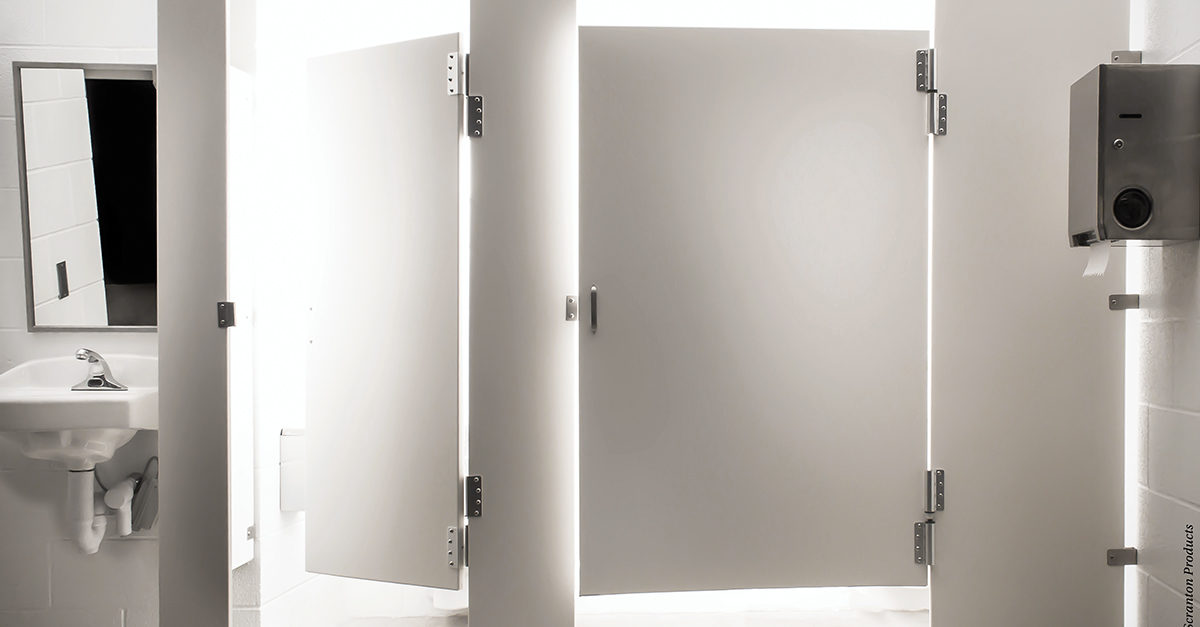Everyday maintenance personnel have the unenviable task of not only cleaning and repairing the damage caused by unruly patrons, but also making paying customers in all types of facilities—from restaurants and hotels to office complexes and arenas—feel safe and comfortable in their restrooms and locker rooms.
Depending on the volume of patrons—for example, nearly 3.5 million fans attended Yankee Stadium last year—these individuals are normally responsible for far more than the usual cleaning of dirt and grime.
There is now an intense effort to protect users from the potential harm of germs and bacteria that can cause serious illness and tarnish the credibility of even the most luxurious sites. Surveys have recently found that E. coli and streptococcus can be found in virtually any public bathroom. This is because skin bacteria can survive for long periods on dormant surfaces, with floors and other materials offering especially ideal locations for the spread of germs and disease.
There is also the pressure of alleviating the fears associated with the use of restrooms and other public sites outside the home. Earlier this year, a story on Livestrong.com reported, “Some four million people in the UK and at least 7 percent of the population of Canada and the United States” are afflicted with “toilet phobia,” and among other things, the “fear of contamination from using dirty toilets.”
As a result, many facilities worldwide have committed their efforts to achieving the utmost sanitary conditions with bath and locker room materials that stand up to destruction, offer a higher resistance to hygienic behaviors, and can be easy to clean. This includes the use of high-density polyethylene (HDPE) materials for stall partitions, showers, vanities, and lockers. In addition to providing the design aesthetics necessary for today’s high-end locations, they have also proven to be resistant to the rust, dents, and scratches that commonly occur with traditional metal partitions.
Unveiled in April 2011, TD Ameritrade Park in Omaha, NE, which is home to the Creighton University Blue Jays and the NCAA College World Series baseball tournament, embraced the concept when the stadium’s architects redesigned more than 300 restrooms with HDPE bathroom partitions.
“These are very functional, high-traffic restrooms, and the HDPE material is durable, won’t dent, and resists bacteria and graffiti,” said Doris Witte, an interior designer with HDR, Inc., who is familiar with bacterial issues, since the company deals primarily with health care designs. “You can steam clean the stalls without worry of rust, and bacteria cannot live on the HDPE surface for very long.”
HDPE solid plastic is a naturally germ-resistant material and can be easily cleaned, since its paint-free surface will not be harmed by cleaning chemicals. Independent testing of HDPE materials in gym lockers, performed by SiTU Biosciences, LLC, and using International Organization for Standardization (ISO) 22196, which specifies a method of evaluating the antibacterial activity of antibacterial-treated plastics and other nonporous surfaces, showed that after 24 hours, 98.4 percent of the methicillin-resistant Staphylococcus aureus (MRSA) bacteria died off the surface of HDPE plastic without the use of any cleaning solutions.
The sanitary value of HDPE materials can be seen at the Little Company of Mary Hospital in Evergreen Park, IL, near Chicago, which completed a US$180 million campus transformation project in late summer of 2014. This included the construction of the new 290,000-square-foot West Pavilion patient tower, which combines state-of-the-art medical care with an aesthetic, spiritual environment committed to healing and peace of mind. The clinical area and nurse’s lounge located adjacent to the West Pavilion’s maternity ward went through a meticulous specification of materials and supplies that would not only increase staff efficiencies, but also ensure personal comfort. This included the selection of 500 HDPE lockers to replace the previous metal lockers, which were noisy and subject to dents, rust, and other maintenance concerns.
Mary Grimm, RN, nurse manager for maternal child services at Little Company of Mary Hospital, says the new lockers are more hygienic than metal. “Whereas crevices and rust can harbor bacteria and viruses, the HDPE lockers help prevent the spread of illnesses by being so easy to clean and wipe down.”
Whether it is a hospital or school environment, the transference of bacteria has prompted many facilities to take action. New strains of MRSA, drug-resistant bacteria, are emerging nationwide, causing hundreds of thousands of infections annually, according to federal data, reports, and academic studies.
MRSA typically causes skin infections, from small pimples to painful boils that usually can be treated effectively by doctors. In some cases, the infections advance, destroying tissue and causing serious illness requiring hospitalization. Federal data suggest that nearly 23,000 people die each year from MRSA infections. The U.S. Centers for Disease Control and Prevention (CDC) urges MRSA education, and routine cleaning and disinfecting is recommended for lockers.
Unfortunately, the dedication to public cleanliness cannot be underestimated during a time when the concerns for the next outbreak or contamination scare are so extreme. However, tried-and-true methods do exist, not only to protect the public’s welfare, but also to make the processes simpler and easier for everyone involved.
HDPE lockers and restroom partitions have the potential to do both for any new public building or renovation project, including school and university hallways and gyms, recreation centers, athletic facilities and stadiums, and hospitals. The benefits, ranging from the reduction of maintenance costs to improved sanitation, can be compelling in an age when public health threats are becoming more common.


